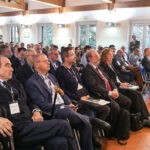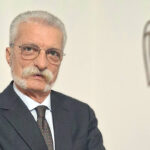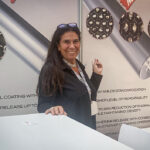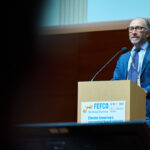Over 170 people attended the conference organized by Acimga at the end of Expo 2015, with a new format that stimulates and goes beyond the supply chain dialog.

It was entitled “Food Stories: the new frontiers of food” the conference organized by Acimga to involve the entire community in a reflection on food packaging. The event introduced a format that includes and goes beyond the typical industry dialog, with a strategic goal in mind: «To develop a dialog about the future, not a snapshot of the state of the art, in order to understand what consumers really want and to develop food products to accommodate that», explains Acimga Secretary Andrea Briganti, «to create a showcase of advanced opportunities and needs that in the end are met with the best production solutions, more a logical than a technological consequence».The event also served as a chance to meet with buyers and institutions from important markets, starting with the Mediterranean. Thanks to a collaboration between ICE-Agenzia and the Ministry of Economic Development, representatives both from the federation of food industries and Morocco’s largest meat processer (Koutoubia group) were on stage. The audience included over twenty buyers from Tunisia, Algeria, Morocco, Egypt, Israel and Turkey, who had a chance to visit Italian converting machine builders (next time, Briganti tells us, the focus will be on the USA).
Consumer experience and service drive profit
The Milan meeting, organized in partnership with European House Ambrosetti and with the support of sponsors (Cerutti, Omet, Uteco, Emerson), was divided into two sessions introduced and coordinated by Carlo Alberto Carnevale (Strategic Management Dept. Bocconi University School of Management) and Carlo Meo (CEO of Marketing and Trade, a consulting firm specialized in consumer habits and retail design).Toghether with academics and sociologists, spoke representatives of the food and beverage industry but also of packaging sector (producers of paper and board, flexible packaging and labels) and vending machine operators, who interpreted the changes reported by the experts and offered some innovative proposals. Their success is proof of the accuracy of their findings: here a some examples .

Noberasco: from dried fruit to snacks. Mattia Noberasco, managing director of the Ligurian company of the same name, recounted the experience of converting dried and dehydrated fruit from a dying commodity into a snack for every occasion.
The crucial steps of this success story were: downplaying negative associations – the “W la prugna” brand dissociates the image of the fruit from its grudging use as a laxative; de-seasonalized consumption and story-telling (the packaging promises exotic fruits with properties to discover); multiplication of opportunities for consumption (snacks, sweet tooth, breakfast…) and thus also distribution channels. And then initiatives to intercept and identify consumers: the temporary shop at Milan’s Garibaldi Station, which has snagged rushing travelers with small on-the-go packaging formats, the opening of single brand stores with countless opportunities for individual contact, the orientation toward paper packaging, with added service and that “speaks”, and more.
Liomatic, or meta-packaging. The idea of vending as Internet – ever present, everywhere and with every kind of product – is made a reality in a vending machine that Ilaria Caporali (CEO Liomatic) describes as a large polyvalent container: recognizable as such and adaptive, moving from its indoor origins outside, exponentially expanding its horizons. In the meantime, it has also changed its indoor function, where it shines as a place for socializing and has thus been repositioned (away from the WC!) and accessorized (waste bins, defibrillators, phone and tablet chargers…)Speed and service are the heart of this particular “distribution channel”, which, Caporali stresses, still presents enormous potential, including as an “ear”: the vending machine can tell the brand owner where and at what time each product is consumed, and in combination with what. This listening function is being progressively refined to enhance recognition and identification of individual users, capacity for customized offer, targeted promotion, etc. This system goes hand in hand with the creation of a packaging portioned and structured ad hoc, and “programmed” to make possible this dialog between man, machine and manufacturer.

Cold-Pharma: a smart label for freshness. Cold-Pharma developed Blueline to monitor the cold chain, identify any interruptions and verify damages in order to execute immediate corrective action. It’s not a thermochromic label but an original and patented system based on a “hyphen” printed on the label with a special magnetic ink that functions as a heat sensor. It is scanned by a corresponding device and can be hooked up to a PDA for data collection.
Oltremare: from jute to RFID. At Oltremare (custom services, machines and lines for processing and packaging industrial food products), safeguarding hygiene and stock integrity means replacing traditional jute bags with flexible modified atmosphere vacuum containers that prevent bacteria and molds. By attaching a microchip to each unit, it is possible to track products always and everywhere.











